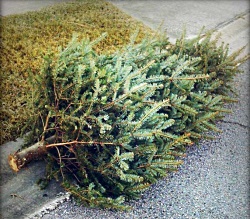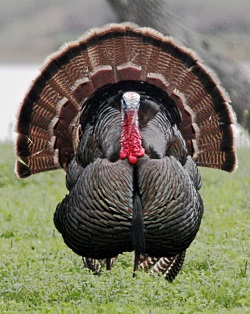
Courtesy University of Illinois Extension
As a word, “repurposing” grates a little on my ear, but the concept is laudable. At my home, we reuse items in new ways for birdfeeding. Our main bird feeder hangs from the trunk of a venerable old apple tree in our backyard. In winter, the apple offers fruits and perches aplenty, but no cover for hungry juncos, chickadees and finches.
What they want are the thick boughs of a conifer. After every Christmas, there is just such a tree, all decorated, standing in our living room. Rather than hurling that tree on the municipal heap straightaway — a rather abrupt fall from grace, if you ask me — we prop it up beneath our feeder, giving it new purpose as a shelter for feeding birds. They duck in and out of its needled boughs all day long. Some even roost there at night. Beneath it, ground feeding birds can safely clean up the seeds that rain down from the feeder above. A ring of upturned tomato cages beneath the feeder — that otherwise lie idle in our vegetable garden — are given a winter purpose of impeding any stray cats interested in the birds beneath our seed feeder. For no cost and scant effort, we provide our feeder birds with shelter from winter storms and protection from feline predators.
Don’t forget water for the birds in winter. Open water can be a scarce commodity. In areas with freezing temperatures, there are heating elements to put in an existing birdbath or baths with a heating element encased in the base. In our yard, the birdbath is as popular as the seed feeders.
Birds appreciate the simple gifts: shelter from a discarded Christmas tree, a feeder full of seed and water to drink.
This is Linda Kervin for Bridgerland Audubon Society.
Credits:
Bird Sounds: Courtesy Kevin Colver
Text: Jim Cane and Linda Kervin, Bridgerland Audubon SocietyBridgerland Audubon Society, https://bridgerlandaudubon.org/
Voice: Linda Kervin, Bridgerland Audubon SocietyBridgerland Audubon Society, https://bridgerlandaudubon.org/
Additional Reading:
Wild About Utah pieces by Linda Kervin and Jim Cane
Bird Habitat Necessities, Audubon.org, https://www.audubon.org/bird/at_home/HealthyYard_BirdHabitat.html
Don’t toss your tree: Help local wildlife, Wildlife Blog, Utah Division of Wildlife Resources, https://wildlife.utah.gov/news/wildlife-blog/827-dont-toss-your-christmas-tree.html



